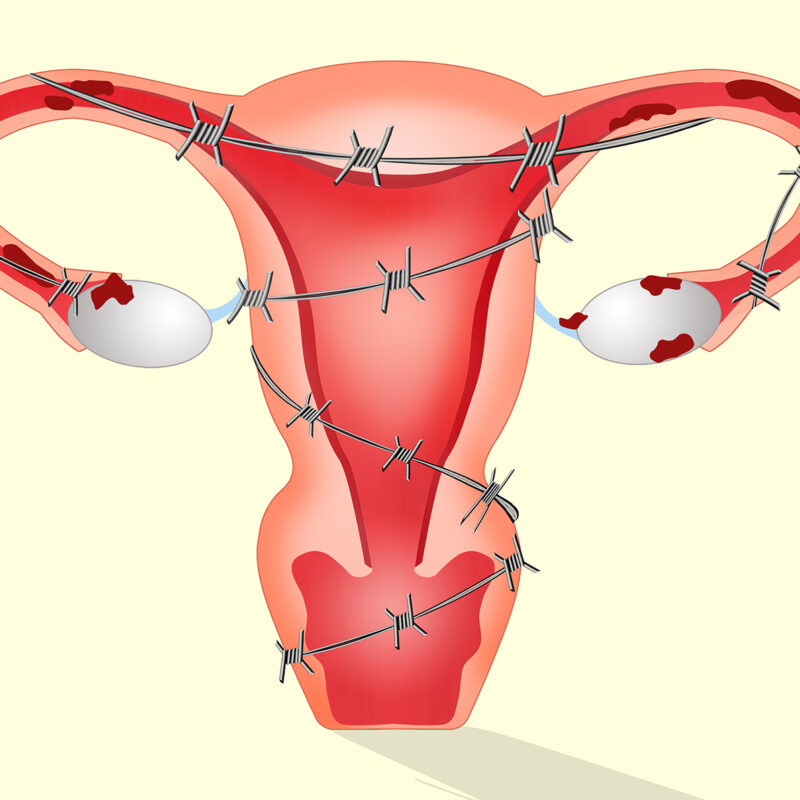Suffer from severe endometriosis? Here’s everything you need to know about applying for disability benefits
Endometriosis is a condition where tissue resembling endometrium (the lining of the uterus) grows in other places, such as the ovaries and fallopian tubes.
This chronic gynecological disease can affect women of any age, including teenagers. It’s a long-term condition that impacts one in 10 women and can have a significant bearing on a woman’s life. But are sufferers eligible for financial support?
In this blog*, we’ll shed light on the symptoms of endometriosis and the treatments available, and explore whether sufferers qualify for disability benefits.
”It's a long-term condition that impacts one in 10 women and can have a significant bearing on a woman’s life

Symptoms of endometriosis
The signs and symptoms of endometriosis can vary from person to person. And, while some sufferers might be seriously affected, others may not have many noticeable symptoms at all. Common symptoms of the condition include:
*Extremely painful menstrual cramps
*Chronic pain in the lower back and pelvis
*Intestinal pain
*Deep pain during or after sex
*Painful bowel movements or pain when urinating during menstrual periods
*Bleeding or spotting between menstrual periods
*Difficulty getting pregnant
*Digestive problems including diarrhea, constipation, bloating, or nausea, especially during menstrual periods
Am I eligible for disability benefits with endometriosis?
Disappointingly, the SSA doesn’t recognize endometriosis as a disability in their Blue Book (a medical guide used to determine whether or not an applicant is ill enough to qualify for benefits).
However, an individual with endometriosis may still be able to qualify under something known as a medical-vocational allowance.

Essentially this means that you and your doctor will need to complete a Residual Functional Capacity (RFC) form, after which the SSA will determine the type of work, if any, that you are reasonably able to perform with your disability.
Should the SSA rule that you are unable to perform any type of job with your medical condition, regardless of the fact that you do not meet a listing in the Blue Book, you can be approved for disability benefits under a medical-vocational allowance.
Over 50? The SSA will use what we call grid rules, to decide if you can be approved under a medical-vocational allowance. The grid rules take into account your age, education, past relevant work, skill set, and residual functional capacity.
”Should the SSA rule that you are unable to perform any type of job with your medical condition, you can be approved for disability benefits under a medical-vocational allowance.
What support is available for endometriosis sufferers who meet the medical-vocational allowance criteria?
The Social Security Administration (SSA) provides two types of disability benefits for individuals battling severe impairments: Social Security Disability Insurance (SSDI) and Supplemental Security Income (SSI).
SSDI is designed to provide benefits to qualified disabled workers who have contributed to the Social Security Fund over the course of their employment history. Meanwhile, SSI is intended for disabled individuals who have little or no resources or income.
“It can take a considerable amount of time to have a claim for disability benefits processed, so don’t delay: once you have all the paperwork in place, apply today. ”

Preparing your application for a medical-vocational allowance
Before applying for a medical-vocational allowance, you will need to gather any medical information that may assist your claim. Request medical reports from your physicians, test results, and detailed letter(s) from your doctor(s) about your functional capabilities.
If you were previously employed, you might want to consider asking a former employer to provide you with a statement explaining your decline in work performance.
Furthermore, you will need to provide certain financial and work-related documents– think bank account statements, pay stubs, etc. You can view the complete list of documents you will need to lodge your disability claim here.
Sampson Dunlap tip? Provide as much information, both medical and financial, as possible to help get your application over the line.
Starting a claim
It can take a considerable amount of time to have a claim for disability benefits processed, so don’t delay: once you have all the paperwork in place, apply today.
You can apply online or over the phone but most people find it easier to apply in person at their local SSA office where a member of staff can help you fill out and submit your claim.
Can I get support when applying for disability benefits via a medical-vocational allowance?
Absolutely. Applying for disability benefits via a medical-vocational allowance can be an anxiety-inducing, full-time job.
Here at Sampson Dunlap HQ, we understand that, which is why we have a dedicated and experienced team who will fight until the end to help you secure the disability benefits you deserve.

For one-on-one support regarding medical-vocational allowance, appealing a decision, SSDI, SSI and so much more, contact us today. Sampson Dunlap has extensive experience of successful Social Security Disability Claims and we are ready and waiting to put that experience to work for you.
Stop struggling with a system that does not care. We are here to support you. That is why you do not pay for our services until we win. Don’t wait any longer. Take control of your life and speak to our friendly team today
*This blog is not meant to dispense legal advice and is not a comprehensive review of the facts, the law, this topic, or cases related to the topic.


